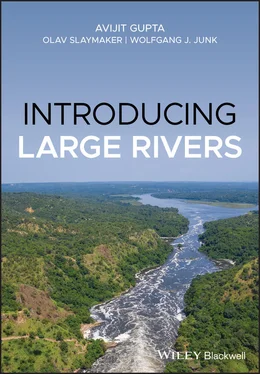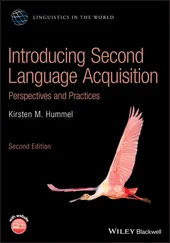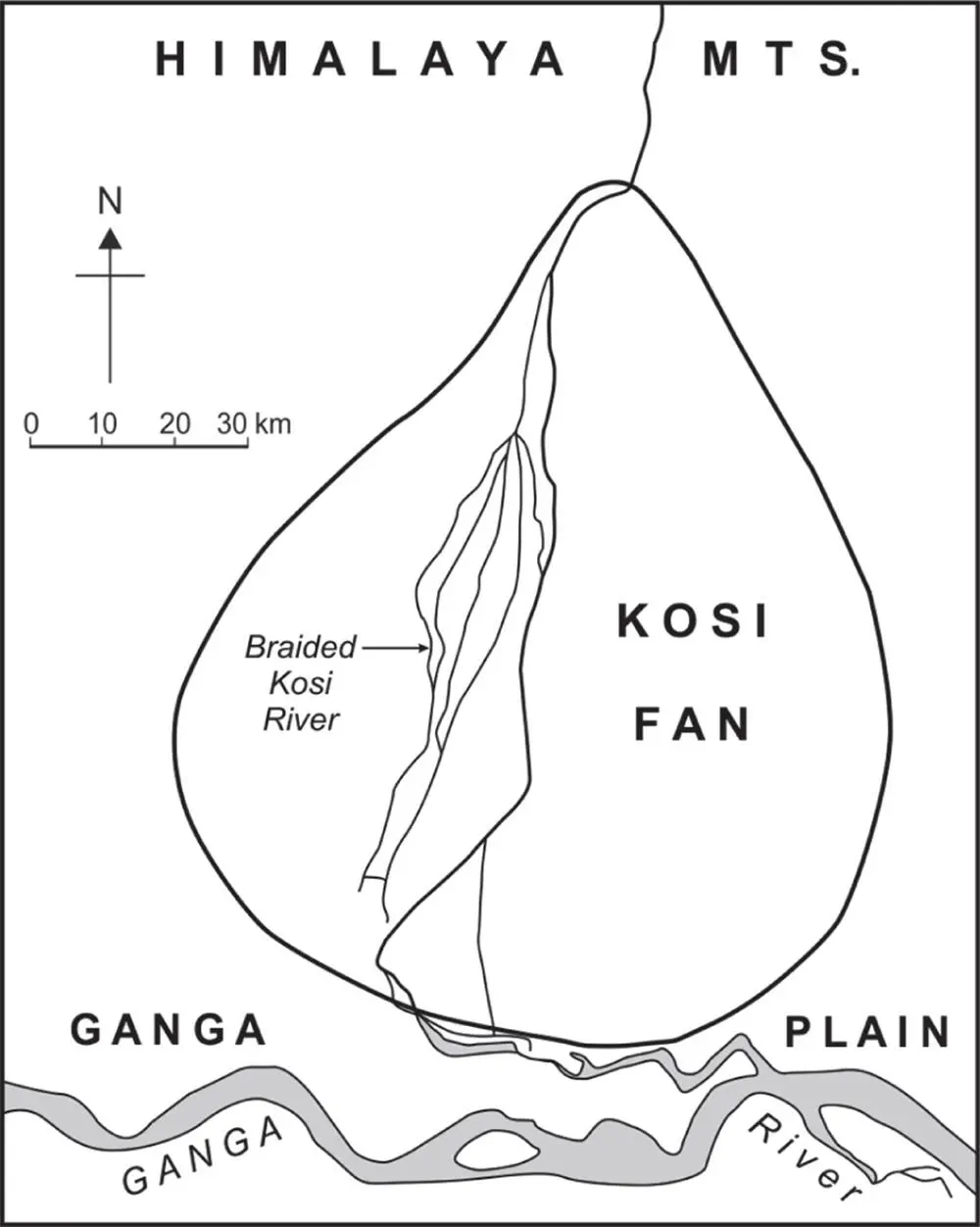
Figure 4.3 Schematic sketch of the megafan of the Kosi River.
braids over boulders and sand; it has a straighter channel over the sand of the middle fan, and a long meandering reach occurs over fine sand and mud of the lower fan. A tropical large river like the Amazon or Ganga or its major tributaries crosses the fan below the mountains in a channel which is not particularly mobile. The entire length of the fan river, however, may avulse in specific tectonic movements or episodic floods. Its course may also shift randomly during high flow, and the fan becomes a principal source of water and sediment to the trunk river skirting the fan below (Chakraborty et al. 2011; Gole and Chitale 1966; Singh et al. 1993; Wells and Dorr 1987).
Big rivers of the world have been long utilised as a natural resource, and in the process many of them have been physically modified by anthropogenic activities ( Chapter 8). The Amazon, however, remains in near-natural conditions, unmodified by anthropogenic activities. This summary of the geomorphology of the river is based primarily on Dunne et al. (1998), Mertes and Dunne (2007), and Meade (2007). The ecology of its floodplain is discussed in detail by Junk et al. in Chapter 5of this book.
The approximately 6000 km long Amazon and its tributaries drain a river basin of about 7 million km 2( Figure 4.4). Its headwaters originate in the folded mountain belt of the Andes in the west and its present east-flowing course post-dates the Miocene uplift of the ranges. Descend i ng from the Andes, the Amazon crosses a downwarped foreland basin, and then a vast lowland, before passing between two cratonic highlands (Guyana Shield to the north and Brazil Shield to the south) to reach the low trailing eastern coast of South America on the Atlantic Ocean ( Figures 4.4and 4.5). Plate tectonics control the location and lithologic and topographic frameworks of the Amazon (Potter 1978). The basin was delineated following the Miocene uplift of the tectonically and volcanically active Andes due to the subduction of the Nazca Plate below the South American Plate. Exploration for petroleum has revealed the underlying structure along the channel and floodplain of the Andes (Mertes and Dunne 2007). Evidence from deep cores indicates an east–west crustal sag underneath the basin axis at a depth of 6000 m that links with a graben, the Marajó Rift, roughly located underneath the mouth of the river. It is a very large river with low gradient and limited power (Baker and Costa 1987), even at the average peak discharge (12 W m −2), which generally carries a huge amount of sediment, but finer than about 0.5 mm.
The discharge of the Amazon comes essentially from precipitation although some snowmelt is derived from the Andes. The precipitation pattern of the region is controlled by the annual shifting of the Intertropical Convergence Zone (ITCZ) and the South Atlantic Convergence Zone (SACZ). Average annual basin precipitation is about 2000–2500 mm, which is near-uniformly distributed over most of the basin. The maximum precipitation of 7000–8000 mm falls on the lower eastern slopes of the Peruvian Andes and, in contrast, the extreme northern and southern parts of the basin are relatively dry. The rain arrives first over the southern basin in November to December, and then moves north. The annual hydrograph of the river ( Figure 3.2) is unimodal and damped. The river floods regularly ( Chapter 5), but the rising of the river stage is slowed by the sheer size of the basin, length of the drainage network, and storage of water in the enormous floodplains which has a cumulative size approaching 100 000 km 2. The precipitation is affected by El Niño Southern Oscillation (ENSO) and so is the discharge. Low flows of the Amazon occur in the El Niño years (Mertes and Dunne 2007). Such climatic fluctuations affect flooding and sedimentation (Aalto et al. 2003) but their effect on morphology and behaviour of the regional smaller rivers is yet to be understood.
Only 800 000 km 2of the Andes and Sub-Andes falls within the 7 million km 2Amazon Basin but this area contributes almost the entire sediment load of the river. Throughout the Late Cenozoic, 500–600 million tonnes of sediment arrived annually from this source, although the foreland basins trapped approximately half of the amount to build fans (Mertes and Dunne 2007, referring to Guyot 1993). The foreland basins sag in response to the rise of the Andes, and its erosion, reducing the river gradients to very low figures. Only fine sediment (<0.5 mm) reaches the lowland Amazon flowing within Brazil. No significant sediment is supplied from the old rocks of the Brazil and Guyana shields, but from there a huge volume of water reaches the river. In brief, the main stem discharge of the Amazon is augmented cumulatively by a number of tributaries draining different parts of the basin, but the sediment supply comes almost exclusively from mountains of high relief at the head of the basin with tectonically fractured rocks and oversteepened slopes as described by Milliman and Syvitski (1992). Almost the entire sediment arrives either from the Peruvian Andes along the Amazon main stem or from the Bolivian Andes via the Madeira (Meade 2007). A number of large tributaries have been described as clearwater streams, rising below the Andes they bring little sediment to the Amazon.
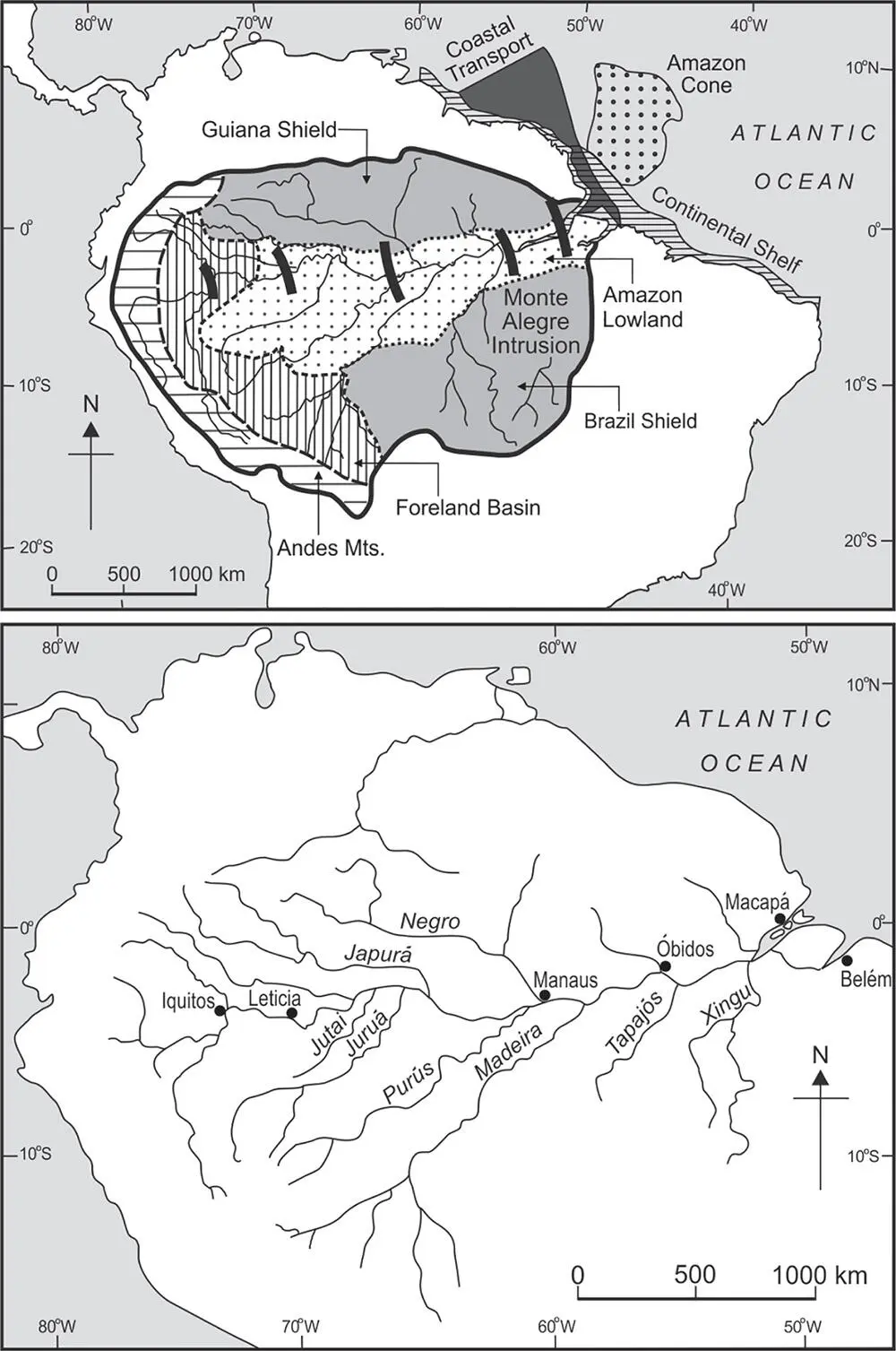
Figure 4.4 The Amazon: Generalised geology and course.
Source: Dunne et al. 1998.
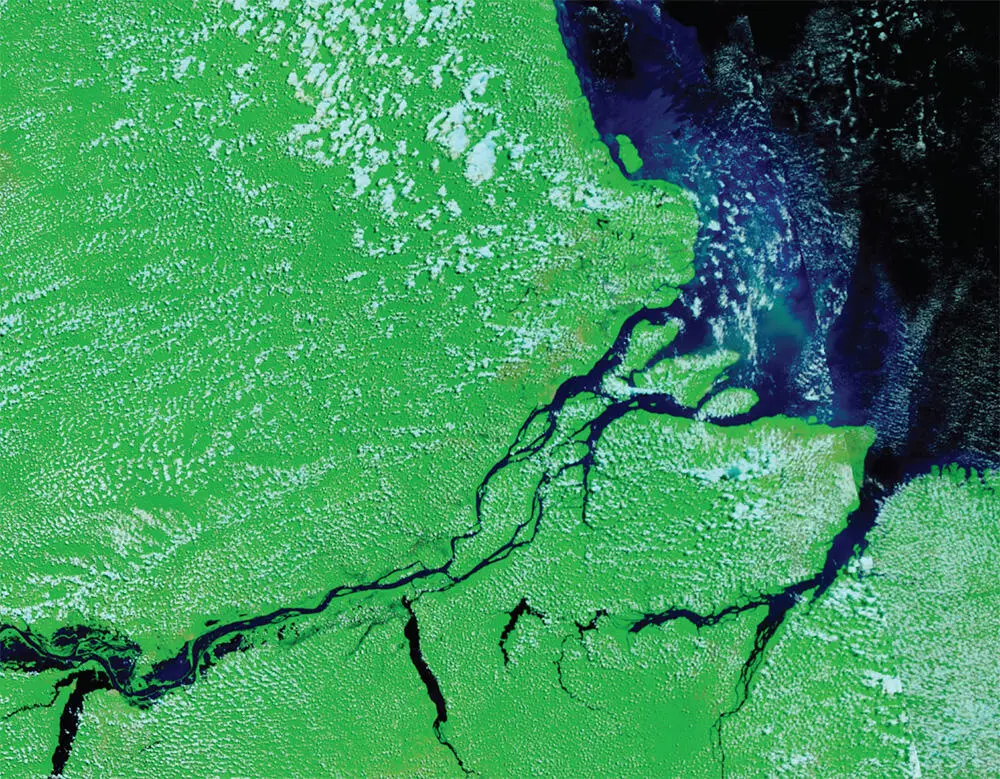
Figure 4.5 The Amazon from satellite imagery.
Source: NASA Worldview application ( https://worldview.earthdata.nasa.gov), part of the NASA Earth Observing System Data and Information System (EOSDIS).
The average annual sediment load of the Amazon measured at Óbidos, approximately at the tidal limit, is about 1200 million tonnes. A bigger load is carried only by the combined flow of the Ganga and Brahmaputra. However, as calculated by Dunne et al. (1998), who studied sediment transport though the 2010 km of the Amazon in lowland Brazil, a higher amount of sediment is transferred laterally between the channel and the floodplain, and then passed downstream ( Figure 3.3). The lateral exchange of sediment involves bank erosion, bar deposition in the main channel, settling from overland flow on the floodplain, and sedimentation in channels within the floodplain. Much of the sediment that leaves the channel in suspension during floods and enters the floodplain is deposited there before clearer water returns to the Amazon during the falling stage of the annual hydrograph. Mertes et al. (1996) estimated that in the reach between the confluences of the Jutai and Madeira with the Amazon, the mean recycling time is between 1000 years and 2000 years. This allows progressive enrichment of quartz grains downstream.
The axial trough of the central Amazon Basin exhibits a remarkable suite of fluvial landforms. The lowland Amazon has a straight and anastomosing channel within its floodplain. The main channel of the Amazon in Brazil has a sinuosity of 1.0–1.2 for most of the course. Over a measured length of 2000 km, the low water width of the river increases from 2 to 4 km and the corresponding depth from 10 to 20 m (Mertes and Dunne 2007). The width of the flooded Amazon is much bigger and the morphology and ecology of the river in flood is discussed in Chapter 5.
Читать дальше
